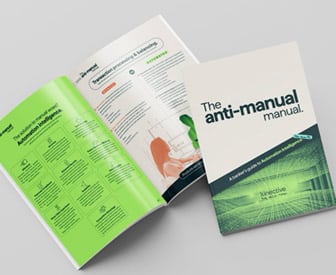The hype — and controversy — surrounding GenAI has tended to overshadow the forward progress being made. But now 2024 is shaping up to be the year the banking industry will move from pilots and proofs of concept to real applications of the technology.
So says Zac Maufe, head of regulated industries at Google Cloud.
“People have been getting their arms around it,” says Maufe, who worked in various banking posts, chiefly at Wells Fargo, prior to coming to Google Cloud in late 2020, “This year, you’re going to see real use cases in production — and the underlying economics of GenAI start to come to life.”

The Financial Brand Forum Kicks Off May 20th
Explore the big ideas, new innovations and latest trends reshaping banking at The Financial Brand Forum. Will you be there? Don't get left behind.
Read More about The Financial Brand Forum Kicks Off May 20th

Join industry’s leading AI conference - free passes available!
Ai4 is coming to Las Vegas, August 12-14 2024. Join thousands of executives and technology innovators at the epicenter of the AI community.
Read More about Join industry’s leading AI conference - free passes available!
The Short-term Focus is on Cost Savings
Research conducted for Google Cloud released late last year reported that over a third of large bank executives believe that GenAI will begin driving major cost savings over the next five years.
The top five areas the survey respondents said they were testing were tools for employees to prepare emails, documents and presentations (57%); preparation of new marketing content such as ads, offers and social media posts (55%); assistance in software and application coding (50%); production of financial reports and prospectuses (49%); and summarizing capital markets research for investment decision making and client briefings (49%).
Coverage of GenAI tends to focus on a handful of large language models like ChatGPT and Google’s own Gemini. Yet LLMs can be overly large for some tasks. Maufe predicts a convergence of increased industry use of cloud computing and the growing availability of specialized forms of GenAI that will allow institutions to bring the right tool to each job.
“You might be using a hammer to do a job, but you might want to try something more delicate.”
— Zac Maufe, Google Cloud
“Bigger models tend to be slower because they are crunching through much more data. On the other hand, a smaller model can be really useful if your bank just wants to look at a narrow use case,” says Maufe.
A key example: Training a model to assist customer reps in a call center. Specialized packages have been developed to address specific challenges like that.
“If you want a focused trained model to help you with a particular body of data, you don’t need a huge language model,” says Maufe. “In fact, you want faster performance because you want it to be really snappy, so you get a response pretty much instantaneously.”
Read more: Is it Already Too Late to Get Started with GenAI? No, But the Clock’s Ticking
Detailed comparisons of credit card programs and suggestions to improve the institution’s own offerings are another example — a very specific task that must be performed over a huge amount of data to find the promising ideas. Another example would be preparing investment market research for customers.
“It’s a repeatable task from which I’m looking for structured output,” says Maufe. He says if an investment client wanted an overview of the energy market, “the model doesn’t need to know about Taylor Swift’s music library.”
If there will be GenAI tools tailored to various tasks, there also needs to be a toolbox for assembling them for ready access.
Maufe says many institutions will find they need platforms that will host a collection of GenAI options on. Such platforms will offer a choice of not only the GenAI that that vendor provides plus other large language models, as well as competitive models and specialized third-party and open-source models. Google Cloud offers a platform called Vertex that includes Gemini and variants on Gemini as well as other GenAI.
Read more: The Speed of the GenAI Revolution Is Creating a Regulatory Vacuum. What’s the Risk for Banks?

Looking at GenAI and Model Risk
As cloud computing moves to the fore thanks to its speed, capacious storage and flexibility, Maufe says the people in the room when decisions are made will change. IT will no longer call all the shots; business units will also be right there.
The financial institution’s risk management function, for example, will play a key role because large language models are subject to financial regulators’ requirements that third-party models be policed internally.
This required a meeting of minds between cloud providers like Google Cloud and banking companies. Up until five or so years ago, Maufe says cloud providers and banks were “talking past each other. Providers were saying, ‘Hey we’re really secure and you can trust us’ Banks were answering, ‘We can’t trust anybody. We have to verify everything’.”
That situation has eased, he says, and, in the process, regulators grew more comfortable with cloud computing. Bankers surveyed by Google say they are investing in technology to move their data into the cloud. In the meantime, institutions have established procedures for evaluating the risk of third-party models that they can be applying to GenAI models. Adds Maufe: “I can’t predict what the regulators are going to do or how they’re going to act. But I do think there is a lot of education going on for everybody.”
See all of our latest coverage on artificial intelligence in banking.







